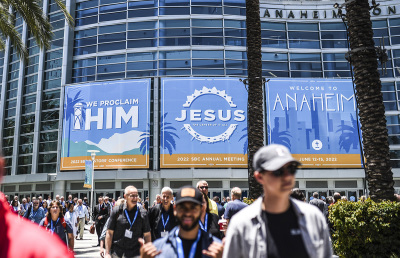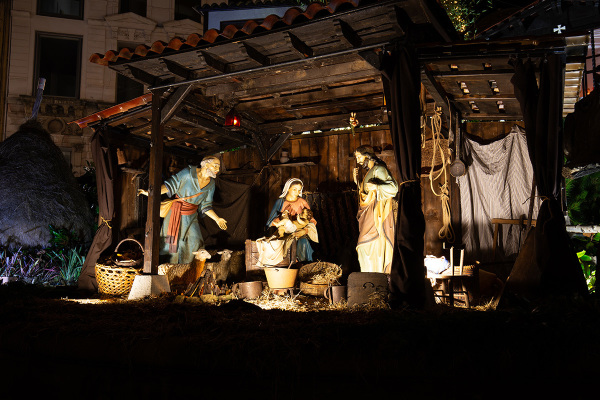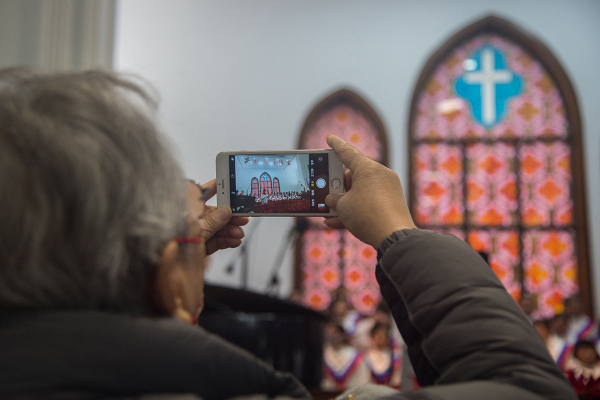Can Southern Baptists do the unexpected and break the downward spiral?

The Southern Baptist Convention (SBC) is the largest Protestant family of churches in America, known for its conservative theology and evangelistic zeal. For nearly four decades I served Southern Baptists as a professor of evangelism and seminary president. In 2010, a special task force recommended a series of proposals called the Great Commission Resurgence, intended to ignite a fresh passion to fulfill the Great Commission among Southern Baptists. I chose not to endorse the proposals because I feared they were more focused on funding issues, Convention infrastructure, and a singular methodology, while turning away from the historic role of rich and varied Spirit-led evangelism in SBC congregational life.
Press and social media coverage prior to the Convention’s annual meeting was almost entirely on the funding proposals. The hour-long discussion of the proposals during the Convention (very long by SBC business standards) also zeroed in on the funding emphasis. Messengers (Convention participants) gave no attention to the state of evangelism, discipleship, or missions in SBC life. Approval of the proposals eventually came. The Great Commission Resurgence proved to be a turning point in the life of the SBC. Alas, it was not the turning point many expected or hoped it would be.
Twelve years have passed since the approval and implementation of the Great Commission Resurgence proposals, and Southern Baptists find themselves firmly in the grip of unprecedented decline in nearly every statistical category. Recent SBC annual meetings have been roiled with controversy over issues growing out of progressive Baptist agenda items such as Critical Race Theory, racial equity, and sexual abuse, not concerns about Great Commission progress. Southern Baptists now deploy fewer missionaries at home and abroad. The North American Mission Board (NAMB) has even stopped reporting the number of its missionaries assigned to church planting. This past February, the Convention’s Executive Committee, which handles the legal and financial affairs of the SBC, heard auditors report that the current financial position for the distribution of SBC funds is unsustainable. After operating without a permanent CEO for a year, on May 1, 2023, the nominee to fill the position was overwhelmingly rejected by the Committee, a first in SBC history. The survival of the SBC is not in question, but for the first time, its role as a Great Commission pacesetter in the evangelical world shows signs of erosion.
What is happening to the Southern Baptist Convention?
Here are some snapshots of the SBC from 2011 to 2021. Church membership dropped by 2,297,619 people. Worship attendance dropped by 2,547,586. The average number of baptisms per church dropped from 7.2 baptisms per church to 3.2 baptisms per church. The outcomes of the highly publicized new approach to church planting by the North American Mission Board have been especially stark. From 2000 to 2010 NAMB spent $227,448,246 on church planting resulting in a net increase of 4,139 in the total number of SBC churches. From 2011 to 2021, NAMB spent $667,391,815 on church planting but saw the net total of churches increase by only 1,850 congregations, about 55% less than the previous decade after spending nearly 300% more money. Adding to the bad news, the 2022 SBC statistical report released just days ago indicated another drop of 457,371 members, the largest single-year decline in more than 100 years, and a rare net loss in the total number of SBC churches. Perhaps more concerning is declining participation in the Cooperative Program, the financial lifeline of the SBC. According to a report in the Summer 2021 edition of SBC Life Journal, in 2019 (pre-pandemic) 19,645 SBC churches (40%) did not give to the Cooperative Program, a stunning piece of data published without fanfare.
This downward spiral reflects a lack of transparency. Southern Baptists assigned the responsibility to support churches in evangelism and discipleship to the North American Mission Board and Lifeway Christian Resources. The SBC Executive Committee is responsible for the health and distribution of the Cooperative Program. Alarm bells have not been sounded nor major new initiatives launched and sustained by any of these entities to address the SBC’s unprecedented decline. Numbers that were positive in the context of a single year were reported in Baptist Press. Negative trendlines revealed when the numbers are examined over the course of a decade were largely ignored. The Convention assumed all was well when the reality was quite different.
Two decisions by the North American Mission Board proved to be very costly. Turning away from its historic emphasis on congregational evangelism in order to increase dramatically money and attention for church planting and compassion ministry did not have the expected results. Baptisms continually dropped, and the number of new churches decreased year after year in spite of far higher budgets for church planting. Also, the Great Commission Resurgence recommended ending historic strategic partnership agreements with the state conventions formed by SBC churches. Instead, NAMB used Cooperative Program funds to centralize control over state convention activities and implement its own strategic priorities, replacing the decentralized partnerships reflecting both regional and national priorities that had been in place for decades. This change had a devastating effect, especially on many non-South state conventions. It eroded the national fabric of cooperation that was the superpower of Southern Baptists. The worst statistical decade in SBC history followed these two decisions.
The Southern Baptist Convention must face the reality of these challenges. I describe myself as an “optimistic pessimist.” I know how bad things are, but I choose hope for the future, rather than resignation or despair. Southern Baptists need to understand that they are in truly difficult circumstances, yet believe in a future bright with hope. There is no time to waste, but there is time to change direction and recapture the identity of the SBC as a family of churches that exists to make a coordinated, cooperative effort to reach a lost world for Jesus.
Second, the Convention must prioritize clearly the work of Spirit-led evangelism in and through its congregations, telling people, especially children and students, about Jesus, calling all who hear the Gospel to respond to Him in faith, and discipling the ones who believe. Doing this effectively will require a pervasive emphasis on applied discipleship that produces distinctive lives, a way of living that differs from that of lost neighbors. Fruitful evangelism and effective discipleship can then produce a multiplication of churches.
Third, the SBC must recognize the necessity of logistical support for its churches. The steady erosion of logistical support for local churches and pastors under the banner of operational efficiency was accelerated by the decision of NAMB to increase centralized control by withdrawing or significantly reducing support for state conventions and associations, especially the smaller conventions outside the South. A top military leader once told me: “Amateurs plan strategy. Experts plan logistics.” Southern Baptists would do well to heed the wisdom of that comment. The strategic partnerships between NAMB and all the state conventions and associations must be rebuilt if there is to be a fruitful future. Again, cooperation is the SBC “superpower.”
The rosy reports Southern Baptists are accustomed to hearing are not so much inaccurate as they are incomplete. They do not fully portray what data collected over time reveal. Great leaders risk telling the whole story in order to do what is necessary to make victorious endings possible. The SBC must identify its Great Commission problems before they can be resolved. After getting those problems on the table, the Convention must then be willing to earnestly seek the Lord’s leadership in how to rectify them. The SBC tolerance for change will be tested. To be honest, other denominations spiraling into decline have failed that test.
In terms of the Great Commission's progress over the last decade, Southern Baptists have little to celebrate. However, one potential dramatic celebration awaits the Convention. For a denomination this deep into decline to break the downward spiral and learn to grow again is very rare. Can Southern Baptists do the unexpected and allow God to use them to blaze a new trail for the recovery of evangelistic fervor and effectiveness? If so, there will be plenty for Southern Baptists and all evangelical Christians to celebrate with deep rejoicing. Stay tuned to the Southern Baptist story. It is getting very interesting.
Charles S. (Chuck) Kelley, Jr. is the President Emeritus and Distinguished Research Professor of Evangelism at New Orleans Baptist Theological Seminary. He joined the faculty in 1983, occupying the Roland Q. Leavell Chair of Evangelism and leading its Leavell Center for Evangelism and Church Health. He became President of the Seminary in 1996. Upon his retirement from the presidency in 2019, Kelley returned to his deep passion for research, reflection, and writing on evangelism, especially Southern Baptist evangelism. His published works include print and video resources for evangelism, targeting both youth and adult audiences on behalf of Lifeway Christian Resources and the North American Mission Board. His most recent book was Fuel the Fire, a history of evangelism in the SBC. His assessment of the impact of the Great Commission Resurgence on the Southern Baptist Convention is entitled: The Best Intentions: How a Plan to Revitalize the SBC Accelerated Its Decline will be released in May 2023. It can be pre-ordered at: www.nebpvermont.com/the-best-intentions.





















